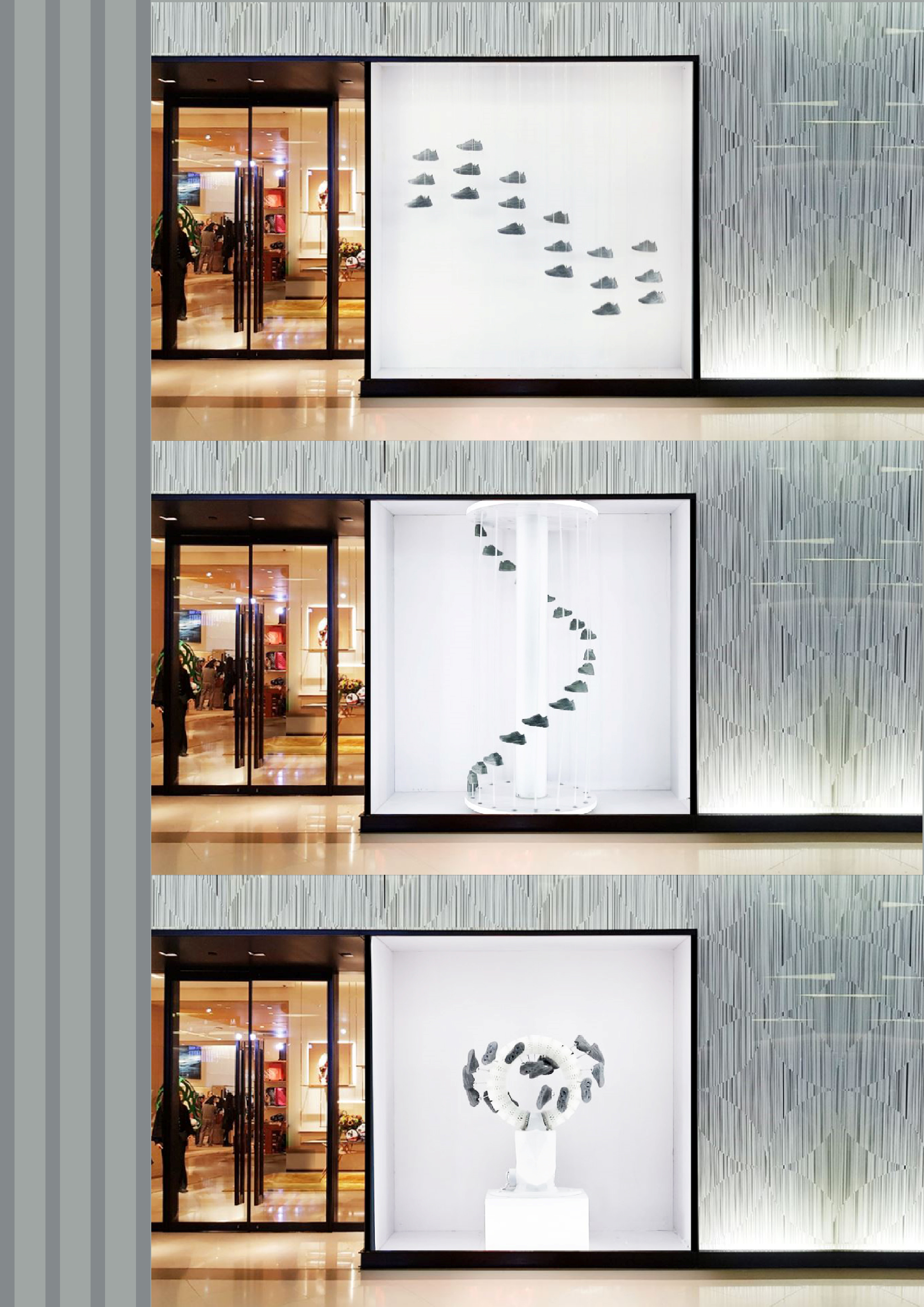The influence of product presentation types and speed motion on emotional responses
Keywords:
Sport shoes shop, Emotional responses, Window displays, design of motion presentation, speed motionAbstract
The research studies the relationships between product motion display and emotional responses. Main goal is a presentation towards the emotional responses in order to provide the guidelines for designs from samples of 35 persons at the age between 21 and 60 years old. To carry out the test from model of moving product through testing box and inquiry from display of three types of design including horizontal waves, vertical waves and circles to find out the best design for emotional responses of viewers by analyzing factor of speed at 5 levels including 0.00 m/s, 0.12 m/s, 0.24 m/s, 0.36 m/s and 0.48 m/s to evaluate emotional responses from 9 pairs of antonym wording. In this study, it can be concluded that the product presentation by motion could improve the positive responses of the sport shoes shops more effectively than product presentation without motion. The presentation by circle design brings the most impact to emotion with “identity”. When circle design moves at the speed of 0.12 m./second, it brings the most impact on “impression” emotion. However, economic factor should be considered from buying power samples, factor of more and various presentation design including the test at real places in the future.
References
Bäckström, K., & Johansson, U. (2006). Creating and consuming experiences in retail store environments: comparing retailer and consumer perspectives. Journal of Retailing and Consumer Services, 13(6), 417-430.
Bakker, I., et al. (2014). Pleasure, arousal, dominance: Mehrabian and Russell revisited. Current psychology, 33(3), 405-421.
Bastowshoop, H., Zetocha, D. & Passewitz, G. (1991). Visual merchandising: a guide for small retailers. Ames: Iowa State University of Science and Technology.
Dawar, N. (2017). Footwear in Thailand. Retrieved September 11, 2019, from https://www.scribd.com/document/348997278/footwear-in-thailand-euromonitor#download.
Illuminating Engineering Association of Thailand. (2016). Khumue neawtang karn oakbab karn song sawang phainai arkhan. (In Thai) [Guidelines for indoor lighting design]. Bangkok: Author.
Kanlaya, R. (2017). Karn chat ongprakop khong silapa. (In Thai) [Composition art]. Retrieved October 15, 2020, from https://sites.google.com/site/kanlayaroduphek/home/kar-cad-xngkh-prakxb-khxng-silp
Kim, M., Choi, K. & Suk, H. (2016). Yo!: Enriching emotional quality of single-button messengers through kinetic typography. Proceedings of the Designing Interactive Systems Conference 2016 (pp. 402-410). Beijing: n.p.
Lange, F., Rosengren, S. & Blom, A. (2016). Store-window creativity’s impact on shopper behavior. Journal of Business Research, 69(3), 1014-1021.
Lee, J., Park, J. & Nam, T. (2007). Emotional interaction through physical movement. Proceedings of Human - Computer Interaction, Part III, HCII 2007 (pp. 401-410). New York: Springer-Verlag Berlin Heidelberg.
Mehrabian, A. & Russell, J.A. (1974). An approach to environmental psychology. Cambridge: Massachusetts Institute of Technology.
Nam, T., et al. (2014). Understanding the relation between emotion and physical movements. International Journal of Affective Engineering, 13(3), 217-226.
Oh, H. & Petrie, J. (2012). How do storefront window displays influence entering decisions of clothing stores?. Journal of Retailing and Consumer Services, 19(1), 27-35.
Pilkington, M. (2019). Retail therapy: Why the retail industry is broken - and what can be done to fix it. London: Bloomsbury Publishing.
Pollick, F. E., et al. (2001). Perceiving affect from arm movement. Journal of Cognition, 82(2), 51-61.
Ritzer, G. & Jurgenson, N. (2010). Production, consumption, prosumption: the nature of capitalism in the age of the digital ‘prosumer’. Journal of Consumer Culture, 10(1), 13-36.
Sayari, S. (2012). Evaluation of window display of retail shops: a case study of Istiklal Street, Istanbul, Turkey. (Master’s thesis). Istanbul: Eastern Mediterranean University.
Sen, S., Block, L.G. & Chandran, S. (2002). Window display and consumer shopping decisions. Journal of Retailing and Consumer Services, 9(5), 277-290.
Somoon, K. & Sahachaisaeree, N. (2010). Factors determining window display conveying merchandise’s positioning and style: a case of shopping mall clothing display targeting undergraduate students. Procedia Social and Behavioral Sciences, 5, 1236-1240.
Thomas, A., Louise, R. & VP, V. (2018). The impact of visual merchandising on impulse buying behavior of retail customers. International Journal for Research in Applied Science & Engineering, 6(11), 474-491.
Ti, C. (2009). The effects of window display setting and background music on consumers’ mental imagery, arousal response, attitude and approach-avoidance behaviors. (Master’s thesis). Portland: Oregon State University.
Wongwaiklun, P., Hapanna, S. & Kongklaew, C. (2019). Yuk phuboriphok plian brand prup tua yang rai hai yu rot. (In Thai) [Does the “consumer” change the “brand” to survive?]. Retrieved May 5, 2019, from https://positioningmag.com/1221287.
Zhu, L. (2009). Effective visual merchandising in fashion retailing. (Doctoral dissertation). Leeds: University of Leeds.



